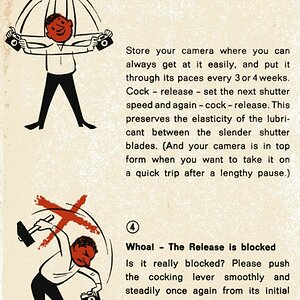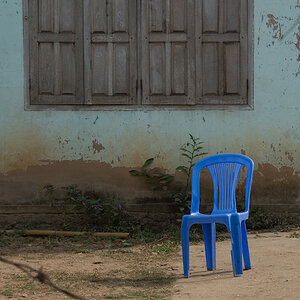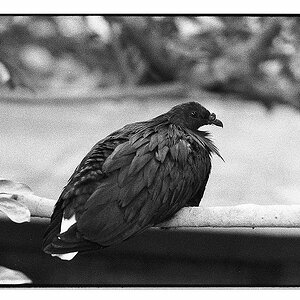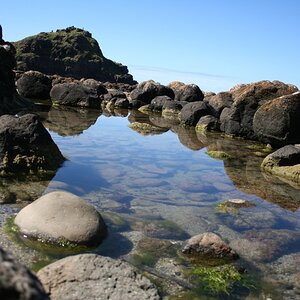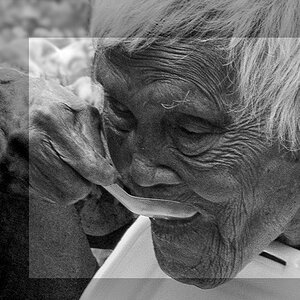Ed Bray
TPF Noob!
- Joined
- Apr 18, 2011
- Messages
- 88
- Reaction score
- 8
- Location
- Plymouth, UK
- Can others edit my Photos
- Photos NOT OK to edit
I visited a little village called Harbertonford in the South Hams, Devon, UK and took some pictures of the church in the centre of the village using my Fuji GX680II with Ilford XP2 Super ISO400 120 film (normally C41 process).
The nominal exposure for the images was 1/125 sec @ f22 but this was reduced to 1/60th sec @ f22 as I was using a Yellow filter on the lens to increase the contrast.
I have been experimenting with Coffee based developers and recently after a little experimentation have standardised on a Caffenol CL formula with Semi-Stand development which has given me some outstanding negatives from regular Black and White films, I therefore decided to try the same technique with the XP2 chromagenic film.
The XP2 Super was processed in my version of Caffenol CL using the semi-stand technique for 65 minutes as follows at 21 degrees Celcius:
Formula: Weighed on a jeweller's digital scale and mixed individually into 500mls distilled water in the following order:
8g Sodium Carbonate (anhydrous) aka Soda Ash
5g Asorbic Acid aka Vitamin C
0.7g Pottasium Bromide
20g Tesco Really Rich Roast Coffee
Then after full mixing, left to stand for 10 minutes.
Film initially soaked for 5 minutes in a water prebath, then developer introduced:
Agitations: First 30 seconds, then 3 inversions after a further: 2 minutes, 4 minutes, 8 minutes, 16 minutes and then empty tank after a further 34.5 minutes.
This was then followed by 3 water bath washes prior to 5 minutes of an Alkaline Fix before multiple tank washes of water and a rinse aid to complete.
I was very pleased with the results as the negatives the exhibit a fantastic range of tones, with very fine grain.
Images were scanned on my Epson V750 scanner at 2400dpi.
Shot with 65mm GX-M at 1/60th sec, f22, yellow filter, slight rise to lose some gravestones.

Harbertonford Church 65mm GX-M by Ed Bray, on Flickr
100% crop of 65mm image 2400dpi

Shot with 125mm GX-M at 1/60th sec, f22, yellow filter,

Harbertonford Church 125mm GX-M by Ed Bray, on Flickr
100% crop of 125mm image 2400dpi
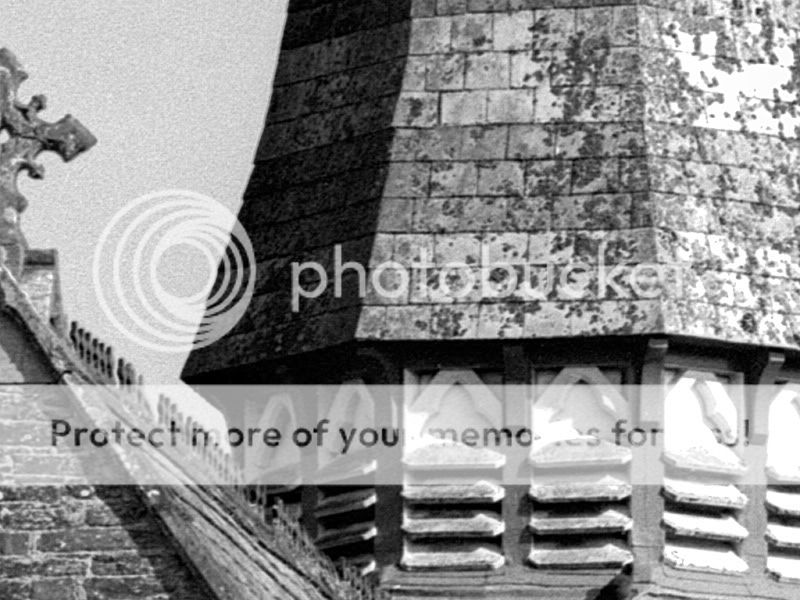
The nominal exposure for the images was 1/125 sec @ f22 but this was reduced to 1/60th sec @ f22 as I was using a Yellow filter on the lens to increase the contrast.
I have been experimenting with Coffee based developers and recently after a little experimentation have standardised on a Caffenol CL formula with Semi-Stand development which has given me some outstanding negatives from regular Black and White films, I therefore decided to try the same technique with the XP2 chromagenic film.
The XP2 Super was processed in my version of Caffenol CL using the semi-stand technique for 65 minutes as follows at 21 degrees Celcius:
Formula: Weighed on a jeweller's digital scale and mixed individually into 500mls distilled water in the following order:
8g Sodium Carbonate (anhydrous) aka Soda Ash
5g Asorbic Acid aka Vitamin C
0.7g Pottasium Bromide
20g Tesco Really Rich Roast Coffee
Then after full mixing, left to stand for 10 minutes.
Film initially soaked for 5 minutes in a water prebath, then developer introduced:
Agitations: First 30 seconds, then 3 inversions after a further: 2 minutes, 4 minutes, 8 minutes, 16 minutes and then empty tank after a further 34.5 minutes.
This was then followed by 3 water bath washes prior to 5 minutes of an Alkaline Fix before multiple tank washes of water and a rinse aid to complete.
I was very pleased with the results as the negatives the exhibit a fantastic range of tones, with very fine grain.
Images were scanned on my Epson V750 scanner at 2400dpi.
Shot with 65mm GX-M at 1/60th sec, f22, yellow filter, slight rise to lose some gravestones.

Harbertonford Church 65mm GX-M by Ed Bray, on Flickr
100% crop of 65mm image 2400dpi

Shot with 125mm GX-M at 1/60th sec, f22, yellow filter,

Harbertonford Church 125mm GX-M by Ed Bray, on Flickr
100% crop of 125mm image 2400dpi





